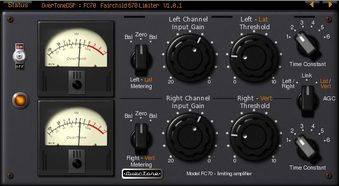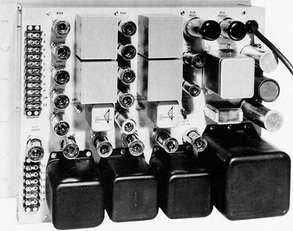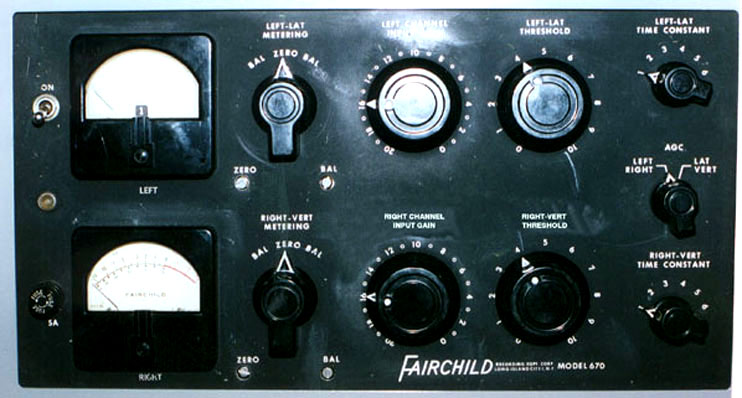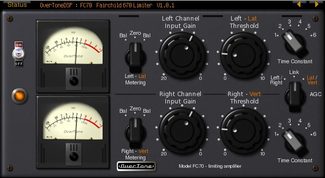OverTone FC-70 Review
Many of us are familiar with well-established, somewhat expensive modelled plug-ins that promise authentic Fairchild 670 sound and performance. UAD’s ”Fairchild® 670 Compressor Plug-In” and IK Multimedia’s “Vintage Tube Compressor/Limiter Model 670” are two of the most highly profiled Fairchild emulations that come to mind. OverTone’s recently released FC-70 also promises to be a faithful digital emulation of the famous studio hardware compressor.
A couple of months prior to this article, I reviewed FC-70’s vintage EQ cousin, “PTC-2A”, from Overtone. I was highly impressed with that offering and as soon as I heard that these lads from England were releasing a Fairchild emu, I was more than a little bit eager to give it a keen “going over”.
I was not disappointed. The wait was definitely worth it, and boy, am I ever ‘jacked up’ to bring you in on it and share my findings with you. For the very conservative cost of only £25 of her majesty’s British Sterling Pounds, this amazing performer, from ‘the other side of the Atlantic’, is a definite must-have. At the very least it is a ‘must-try’. I strongly recommend that you download the demo and find out for yourself just how ‘sterling’ this upstart is. 
Ah, the warmth and goodness of two independent compressor/limiting amps heating up and bearing down on a poor, unsuspecting audio signal. The 670 was, and certainly still is, an indulgent synergy of tubes and copper-wound balanced-transformers. It’s the stuff that legendary sound is made of. Difficult to distort, and fast as the merry tales, the famed Fairchild 670 was technically the very first “Modern” compressor. It literally reframed the audio dynamics hardware industry by aurally portraying itself as the only device, up to its time, that was capable of operating without thumps, distortion and noise.
“Some emulations will attempt to add 'warmth' and 'grunge' that comes from components that are now 40 - 50 years old, whereas what I've set out to do is to capture the 'essence' of what made these units great *originally*.”
A Fairchild 670 doesn’t simply control the sound; it helps to ‘create’ it. I’m not one of the blessed few who can afford to buy one of these collector’s items. A collector’s item that would likely cost upwards of $35,000 (yes, you read that correctly - thirty five thousand). Thank God - and some fine developers at UAD, IK Multimedia, and now OverTone - that we can experience this kind of sound in a $1000 computer. Isn’t technology wonderful?
Since the mid 2000s, up to the time of this article (May, 2013), there has been a reinvigorated admiration for classic studio hardware staples. This includes everything “analogue”: Compressors, Equalizers, Channel Strips, Amp sims, Virtual instruments, and etcetera. Nevertheless, perhaps there is a point that many trenders are failing to realize. Back in the day, when “Fairchild” and “Teletronix” compressors were being manufactured, engineers and producers weren’t hoping to create ‘vintage’, grungy sounds; rather, they were striving to create better, cleaner, and more distinct recordings. It is almost amusing to hear the remarks and read the comments made by many audio-community members who think that vintage, classic sounds automatically means ‘saturation’ and ‘color’. While it’s true that subtly-distorted analogue circuitry will please our ears with harmonics-enhancing after effects, this was not what the original hardware designers were intending. Saturation is a side-effect that can actually be detrimental to some musical genres. It is from this intelligent perspective that OverTone have developed their carefully modeled plug-ins. Mr. Mike Start, the lead developer and purveyor of OverToneDSP, says it this way:
As you will see and hear in the accompanying video, dear reader, FC-70 is fast, clean, open, and a flexible vintage-styled compressor. Great strides were taken to ensure that it adheres to the original hardware’s schematic and design. This compressor is easily interchangeable with other Fairchild 670 emulations costing much more.
Installation and Authorization:
The small, downloadable 7.5 MB zip file contains 32 and 64 bit installers for both MAC and PC. Extract the zip file and install whichever version(s) are appropriate for your system. The downloadable zip archive is the actual, full version of the plug-in, but the plug-in is constrained to operating in demo mode until it has been authorized (unlocked) with a valid license file. Upon purchase, a license/activation key will be delivered to your email inbox. To activate the plug-in, one needs to simply extract the license key and put it into the plug-in’s folder. e.g. “C:\Program Files\Steinberg\VSTplugins” No Call/Challenge headaches and no dongles required. 5 STARS!
Visuals:
FC-70 closely resembles the appearance of an original Fairchild 670 compressor. This is not exactly a full-blown photo-realistic interface, but there is a nice degree of subtle 3D-like protrusion, bevelling, and shadowing effect that prevents it from being categorized as a static 2D design.
Each knob is clearly labelled and the crisp, anti-aliased typeface is legible and easily seen. The VU meters are accurate and responsive. While they do respond in real-time, they do so smoothly without erratic, “herky-jerky” movements. Eye-pleasing attention-to-detail is observed in the “old” corner screws and amber-lit power indicator. I also want to bring to your attention that while the compressor is turned “off”, it is in true bypass mode and thus does not consume any stray CPU cycles. The knobs have been programmed to mimic a weighted dial “feel” with a small amount of ‘inertia’. This programming design lends itself to a much more realistic “in the box” experience. There doesn’t seem to be a means of resetting a knob to a default value, but since the knobs are larger, and smooth operating, I’m not going to knock off any points. Mind you, I might make a subtle mention of it to the developer. D’OH! I just did. As the user changes the position of a knob, the control’s value will be displayed in the status bar which is located in the upper left corner of the interface. Clicking on a knob will display its current value. There is a built-in preset manager, but it contains only 5 presets. So? It’s an emulation of one of the world’s easiest to use compressors. Get over it. . . . *Bro. Charles grins and ducks.
Sound Quality: Picture this. It’s 1969 and the studio owner finally let you talk him into springing for a Fairchild compressor/limiter amp. You hoist the 50 lb. piece of analog machinery into place. You turn it on. You let it warm up for six or seven minutes. You start to playback your state-of-the-art <--Stereo--> recording and suddenly realize more headroom and dynamics control than you imagined possible. Unfortunately, once you start to push it a little too hard, your tape suffers from nasty distortion. 
As the studio’s lead engineer, you know what has to be done - a tube refit. After all, the studio-owner bought a used unit that’s been in use for hours a day, every day, since more than 4 years. You power down. You spend 20 minutes removing the panels and all 20 tubes. You replace them with brand new 6386s, 12bH7s and 12ax7s. You panel tap. You work your musculature and reseat the beast into the rack. You power on. You wait anxiously for 6 minutes. You resume playback. You sigh blissfully.
So that’s what a 670 sounds like?! Note to self: Tube refit every 18 months. I am stating for the record, here and now, in print on the world wide web for all to see; FC70 sounds like a pristine, analogue compression giant *outfitted with brand new tubes*. You can push it into overdrive, but man-OH-man, this is one versatile compressor that has some very serious “clean” vibe. Watch the video. This thing makes drums sound . . . incredible!
CPU Consumption:
What CPU drain? This fine piece of United Kingdom ingenuity is tremendously well-programmed. Most nearly any up-to-date computer should be able to host this compressor on dozens of tracks simultaneously. 5 BIG, BRIGHT STARS! Many computer users are spoiled with the ease-of-use that modern Windows and OSX provides. OverTone’s developers are the sort that specializes in hardcore, super-geek, C++ programming. Remember, OverTone is an extension of LinuxDSP. These chaps don’t simply install a new operating system and just click “next, next, next & OK”. Nah, mate. If the system needs tweaking, they optimize and recompile their Linux OS kernel. I used to be an assistant Linux sys admin. I can assure you, these guys know how to program efficiently! *By the way, as a computer/networking tech myself, I mean the term “Super-Geek” as a compliment. Concluding Remarks: I am a proud supporter of OverToneDSP. Their products are very, very well crafted. They maintain and update their products whenever unforeseen bugs or quirks are reported. OverTone’s prices are very reasonable. The GUI engine is custom crafted and is fast, and attractive, while remaining light on system resources. Here is one reviewer that gives OverToneDSP 5 Stars and Two Thumbs Up.
Brother Charles is a freelance writer, Gospel music artist and minister. Charles had been a professional touring musician during the nineties; working primarily as a lead guitarist in the Canadian country music industry. Brother Charles is also involved with music production and quality home recording.
11 Comments
5/15/2013 09:36:17 am
I've acquired their pullteq emulation, just becase I dream on a day that linux will be a first class citzen in the audio world. Besides that, their plugins are amazing.
Reply
Jared Behrens
5/19/2013 06:49:08 am
In the video, the time constant on the right/vert was at 5 for the Overtone and at 1 for the T-Racks. Does that make a difference?
Reply
Bro. Charles
5/19/2013 09:40:32 am
Hi Jared. My bad. The time constants of 5 & 6 are very similar to the static settings of 1, 2 or 3. The main difference being that they have slower/multiple release time, depending on the program material.The attack is 0.4 ms instead of 0.2 ms. (#1 uses 0.2 ms attack). I will very likely re-record some parts of the video and splice in the correct settings.
Reply
Matthew Costello
7/6/2013 06:13:10 am
The video won't come up. I get a message that says " This video does not exist".
Reply
Bro. Charles
7/6/2013 09:23:10 am
I was puzzled by your comment. I checked and saw that you were right. I releaed the page, and there it was safe n' sound. Umdunno . . . works now.
Reply
Burillo
11/15/2013 07:20:27 am
There is a feature that amazingly neither developer nor any of the reviews ever mention. I myself knew this from the developer only after asking a question on a different topic.
Reply
Andrew
12/6/2014 01:04:37 pm
Great thoughtful review thanks.
Reply
Bro. Charles
12/6/2014 05:46:05 pm
Hi Andrew,
Reply
Arthur
12/18/2014 12:30:46 am
Thanks for the video - it helped me understand a great deal more about the plugin. One thing though - the video directly below of the Waves Puig670 version suggests that this is really the plugin to beat? Just wondering why you didn't run a comparison with the Waves version if that's really the standard to beat?
Reply
L Baldwin
12/22/2018 07:11:11 pm
5 years on... come back OvertoneDSP! We need you in the plugin stratosphere.
Reply
Your comment will be posted after it is approved.
Leave a Reply. |
NO SPAM! IK Multimedia Group Buy
FX Pick & Mix Group Buy - up to 16 for the price of 1
Will You Help?Web hosting is getting more and more expensive all the time, and Reviewer's Revival is NOT funded nor supported by any commercial enterprise or business. A donation of any amount is greatly appreciated. Even $2 or $3 for a coffee - every little bit helps. Thanks very much.
Legal BlurbAll of the articles published on Reviewer's Revival are undertaken to be purely objective, impartial reviews. Reviewer's Revival is not owned, funded-by, nor hired by any company or individual. Reviewer's Revival is the sole property of, and solely under the discretion and direction of Brother Charles. |







 15% OFF Summer Sale!
15% OFF Summer Sale!
 RSS Feed
RSS Feed

